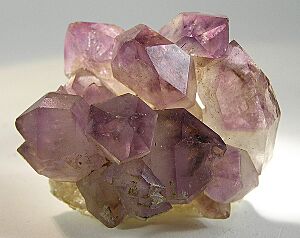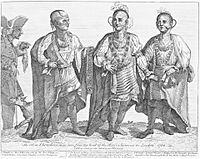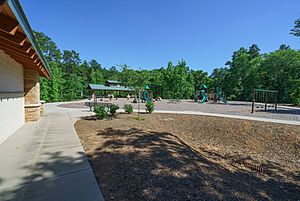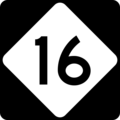Denver, North Carolina facts for kids
Quick facts for kids
Denver, North Carolina
|
|
|---|---|
| Country | United States |
| State | North Carolina |
| County | Lincoln |
| Area | |
| • Total | 5.93 sq mi (15.37 km2) |
| • Land | 5.93 sq mi (15.35 km2) |
| • Water | 0.01 sq mi (0.02 km2) |
| Elevation | 889 ft (271 m) |
| Population
(2020)
|
|
| • Total | 2,697 |
| • Density | 455.04/sq mi (175.68/km2) |
| Time zone | UTC-5 (Eastern (EST)) |
| • Summer (DST) | UTC-4 (EDT) |
| ZIP code |
28037
|
| Area code(s) | 704 |
| FIPS code | 37-17000 |
| GNIS feature ID | 2584315 |
| Website | http://www.denvernc.com |
Denver, once called Dry Pond, is a small community in Lincoln County, North Carolina, United States. It is a "census-designated place," which means it's a special area the government counts for population. In 2020, about 2,697 people lived here.
The community was known as "Dry Pond" until 1873. A local school leader, D. Matt Thompson, helped change its name to "Denver." This was done to attract the growing railroad industry. The name "Denver" came from the capital city of Colorado. Denver was officially a town from 1877 until 1971. Then, it became part of Lincoln County again.
Contents
Where is Denver, North Carolina?
Denver is located on North Carolina State Highway 16. It sits west of Lake Norman, a large lake. The community is about 25 miles (40 km) north of downtown Charlotte. It is also about 15 miles (24 km) southeast of Newton. Denver's northern edge touches the Catawba County line.
The U.S. Census Bureau says Denver covers about 5.9 square miles (15.4 square kilometers). Most of this area is land. Only a tiny part, about 0.01 square miles (0.02 square kilometers), is water. Denver's ZIP code is 28037. The land here is about 889 feet (271 meters) above sea level.
Who Lives in Denver?
The 2020 census showed that 2,697 people live in Denver. In 2000, for the wider area around Denver's zip code, there were 13,030 people. The average age was 41 years old. Most people were White (83.9%). About 5.8% were African American.
There were over 5,000 households. Most of these were families. The average household had about 2.56 people. Most adults (82.9%) had finished high school or more. About 20.4% had a college degree. Many people worked in manufacturing, transportation, or construction. The average household income was $52,304.
A Look at Denver's History
How Denver Got Its Name
The community was first called Dry Pond. This name came from a small pond that used to be at the corner of Highway 16 Business and Campground Road. This pond would often dry up during hot summer months.
Early Settlers and Churches
The first European families, like Adam Sherrill's, settled here in 1747. People from Pennsylvania with Scotch-Irish and German backgrounds were among the first settlers. Many early Scotch-Irish settlers were Presbyterians. Their first church was in John Beatty's house. This church is now known as Unity Presbyterian.
Later, Methodists from Maryland also settled nearby. Important Methodist leaders were Rev. Daniel Asbury and Rev. Jeremiah Munday. In 1791, Asbury started the first Methodist church west of the Catawba River. This church is now Bethel United Methodist Church. These Methodists started "camp meetings." These were big outdoor religious gatherings. The local Rock Springs Camp Meeting still happens today and started in 1794.
Native American History
Before Europeans arrived, the land was home to the Catawba and Cherokee people. The Catawba River often marked the border between these two groups. They sometimes fought each other. When Europeans first settled, there was some fighting between them and Native Americans. A fort was built near Statesville to protect the settlers.
The Battle of Cowan's Ford
On February 1, 1781, a battle happened near present-day Denver. British forces fought North Carolina troops during the American Revolutionary War. General William Lee Davidson led the American troops. The British were chasing American forces after a big American win at Cowpens, South Carolina. Davidson's troops tried to slow them down.
The river was high, making it hard for the British to cross. A local guide helped the British cross early in the morning. The battle started, and the Americans fought bravely. But they were greatly outnumbered. General Davidson was shot, and his troops had to retreat. This battle helped a larger American force escape safely.
Industries and Growth in the 1800s
Most early settlers were farmers. They grew their own food and hunted. Grist mills (for grinding grain) and saw mills (for cutting wood) were the first local businesses. But making iron soon became the biggest industry. By 1810, Lincoln County had six iron-making places. Many people helped build these ironworks. These places made iron for tools and other needs. During the American Civil War, some furnaces reopened to make iron for the Southern war effort.
From Dry Pond to Denver
A post office called Dry Pond opened before the Civil War. In 1873, the community wanted to attract a railroad. They thought the name "Dry Pond" didn't sound good. So, the local school headmaster, D. Matt Thompson, helped change the name to Denver. This was after the capital of Colorado.
Before the Civil War, wealthy people from the South visited Catawba Springs. This resort was near Denver. It had seven mineral springs. People believed the water had healing powers. The resort grew, with a large hotel and cabins. Guests came from North and South Carolina, and even other states. But the Civil War ended this time of luxury. Catawba Springs closed in the 1860s.
Denver During the Civil War
During the Civil War, the local area formed two groups to fight for the Confederacy. One group was called the "Dry Pond Dixies." The other was the Beatty's Ford Rifles.
Becoming a Town and Later Changes
In 1874, Denver got its first postmaster. Two years later, the community officially became a town. However, the railroad did not come through Denver. This slowed the town's growth for a while.
For many years, "downtown" Denver was small. It had a few houses, stores, churches, a school, and a post office. There was also a bank and a cotton gin. For a short time in the late 1800s and early 1900s, people even looked for gold here.
Modern Denver

Denver was mostly a farming community for a long time. Cotton was the main crop. Before World War II, people started working in textile mills in nearby towns. Denver lost its official town status in 1971.
A big change came when Lake Norman was created in 1962. Duke Power built the Cowans Ford Dam. This flooded farmland along the Catawba River. Soon, people built vacation homes by the lake. Later, more expensive homes appeared as people moved to live near the water. Today, Denver is a "bedroom community" for Charlotte. This means many people live in Denver but work in Charlotte.
Old Highway 16 is Denver's "main street." It was one of North Carolina's first state highways. Today, a newer, four-lane Highway 16 runs along the edge of the community.
In the 1970s, Denver hosted a large motorcycle race. It was called the "Denver 100." This race helped raise money for the local fire department.
Denver is also home to the Rock Springs Campground. This place has held revivals and camp meetings since 1794.
Historic Places
Some important historical places in Denver are listed on the National Register of Historic Places. These include the William A. Graham Jr. Farm, the Munday House, and the Rock Springs Camp Meeting Ground.
Getting Around Denver
- NC 16: There are two parts of NC 16 in Denver. Locals call the older road "Old 16" or "16 Business." The newer, faster road is called "New 16" or "16 Bypass."
- NC 150: This highway crosses NC 16 in Denver. It leads to Mooresville to the east. To the west, it goes to Maiden and Lincolnton.
Parks and Outdoor Fun
- Beatty's Ford Park: This park has boat access to Lake Norman. It also has picnic areas, restrooms, disc golf, and walking trails. There's a volleyball court, horseshoe pits, and a splash pad in summer. Kids can enjoy two playgrounds.
- Rock Springs Nature Preserve: This park has a picnic shelter and a large playground. It has a partially paved trail that goes through the woods. The trail also has an outdoor classroom.
- Rescue Squad Park: This park has several sports fields and a large picnic shelter. It has a modern playground for kids. There's also a hilly trail with a disc golf course. Denver's Farmer's Market is held here on Saturdays during warmer months.
Schools in Denver
Rock Springs Academy was one of the first schools. It became Rock Springs School, teaching grades 1-12. When East Lincoln High School was built in 1967, Rock Springs became an elementary school. The mascot for East Lincoln High School is "The Mustangs."
High Schools
- East Lincoln High School
- North Lincoln High School (in Lincolnton)
Middle Schools
- East Lincoln Middle School (in Iron Station)
- North Lincoln Middle School
Elementary Schools
- Catawba Springs Elementary School
- Rock Springs Elementary School
- St. James Elementary School
Charter Schools
- Lincoln Charter School
- West Lake Preparatory Academy
Fun Events in Denver
Denver has several yearly events. The Strawberry Festival is held in May. The Denver Days festival happens every September. The annual Camp Meeting at Rock Springs Campground takes place in the summer. It has been happening since 1794!
A Farmers' market is held on Saturdays. You can find it at Rock Springs Elementary School from mid-April through September.
The East Lincoln Betterment Association hosts a Christmas Parade each year. It happens on the first Saturday of December. The parade goes along NC Business 16.
Famous People from Denver
Many interesting people have connections to Denver:
- Tony Cloninger (1940–2018): A former professional baseball pitcher and coach for the New York Yankees.
- William Alexander Graham (1804–1875): A former U.S. senator, governor of North Carolina, and U.S. Secretary of the Navy.
- Jamie Hacking (born 1971): A professional motorcycle racer.
- Adam Scherr (born 1983): Also known as Braun Strowman, a professional wrestler.
- Paul Silas (1943–2022): A professional basketball player and coach.
NASCAR Drivers and Personalities
Several people involved in NASCAR racing have lived in Denver, including:
- Kyle Busch
- Matt Carter
- Travis Carter
- Jeremy Mayfield
- Matt McCall
- Hank Parker
- Hank Parker Jr.
- John Reiser
- Ryan Repko
Images for kids
See also
 In Spanish: Denver (Carolina del Norte) para niños
In Spanish: Denver (Carolina del Norte) para niños








